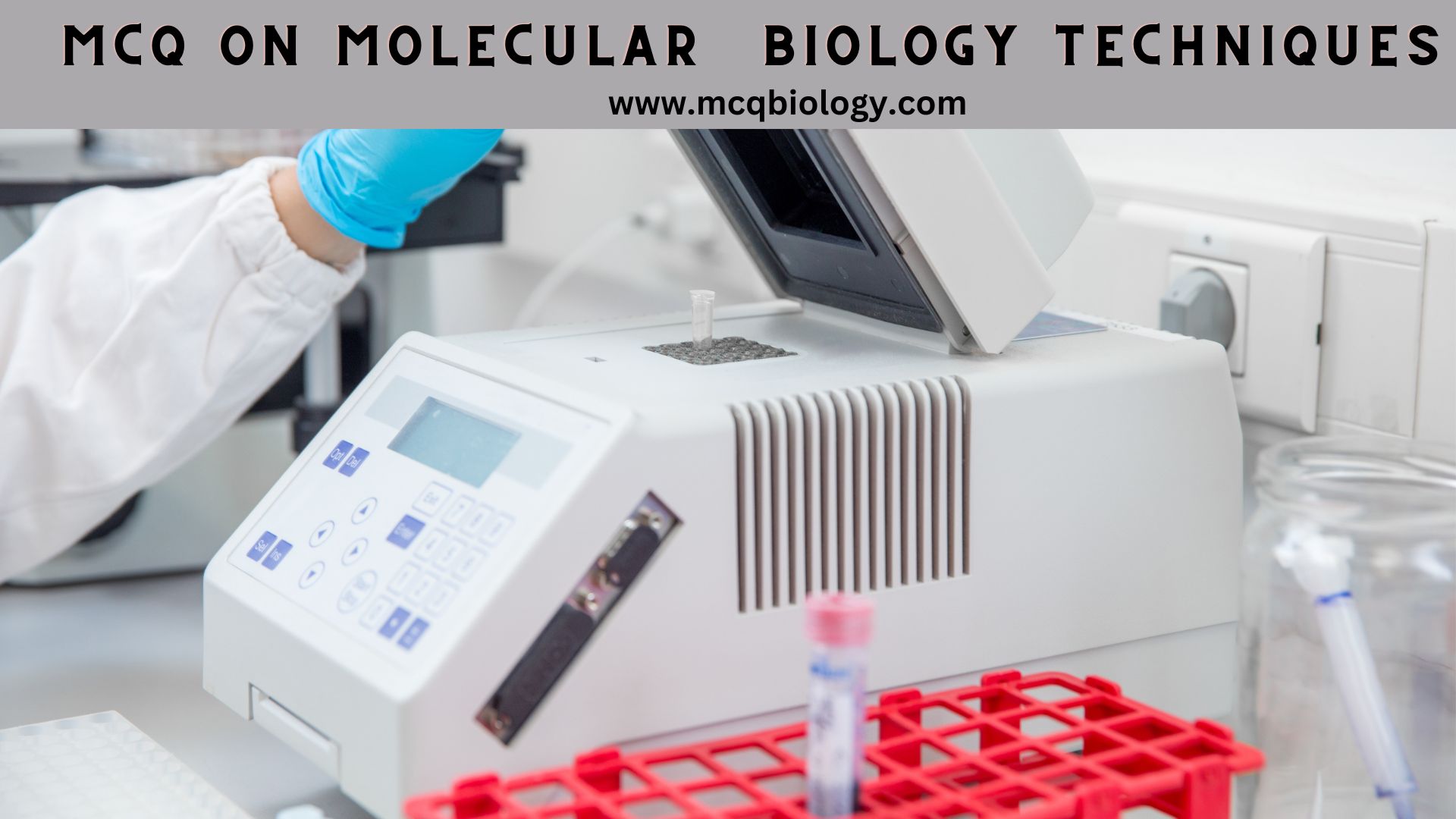1. The proteins in the native PAGE are separated on the basis of
A) Molecular mass
B) Net charge and size
C) Net charges
D) Based on isoelectric value
2. When light is irradiated into a rapidly flowing solution containing cells, a scattered light is released from the cells and cells can be separated based on the properties of the scattered light. This principle is used in
A) Radioimmunoassay
B) Flow cytometry
C) Immunoprecipitation
D) Fluorescence microscopy

3. Electrophoresis of histones and myoglobin under non-denaturing conditions (pH =7.0) results in
A) Both proteins migrate to the anode
B) Histones migrate to the anode and myoglobin migrates to the cathode
C) Histones migrate to the cathode and myoglobin migrates to the anode
D) Both proteins migrate to the cathode
4. Which of the following techniques would give you the
most precise and accurate information about where and when a given gene is expressed?
A) In situ hybridization
B) DNA microarray
C) Promoter gene fusion including introns
D) Reporter gene fusion including introns
5. The methodology for defining gene arrangement in very
long stretches of DNA
(for example 50-100kb) is
A) Nick translation
B) Chromosome walking
C) AFLP
D) Southern blotting
6. X-ray diffraction analysis is based on
A) Beer-Lambert’s law
B) Bragg’s equation
C) Partition coefficient
D) Sedimentation coefficient
7. The length of the DNA associated with a protein is
determined using the technique
A) DNA replication
B) DNA fingerprinting
C) DNA footprinting
D) DNA priming
8. Quantitative PCR is
A) Real time PCR
B) RT PCR
C) Inverse PCR
D) Multiplex PCR
9. Asymmetric PCR differs from regular PCR in
A) The amount of primer used
B) DNA polymerase enzyme
C) Denaturation temperature
D) template concentration
10. Technique which employ nucleic acid probe for the diagnosis of viral disease?
A) dot blot hybridization
B) Insitu hybridization
C) Sandwich hybridization
D) All of these
Answer:
1. B) Net charge and size
2. B) Flow cytometry
3. C) Histones migrate to the cathode and myoglobin migrates to the anode
4. B) DNA microarray
5. B) Chromosome walking
6. B) Bragg’s equation
7. C) DNA footprinting
8. A) Real time PCR
9. A) The amount of primer used
10. D) All of these